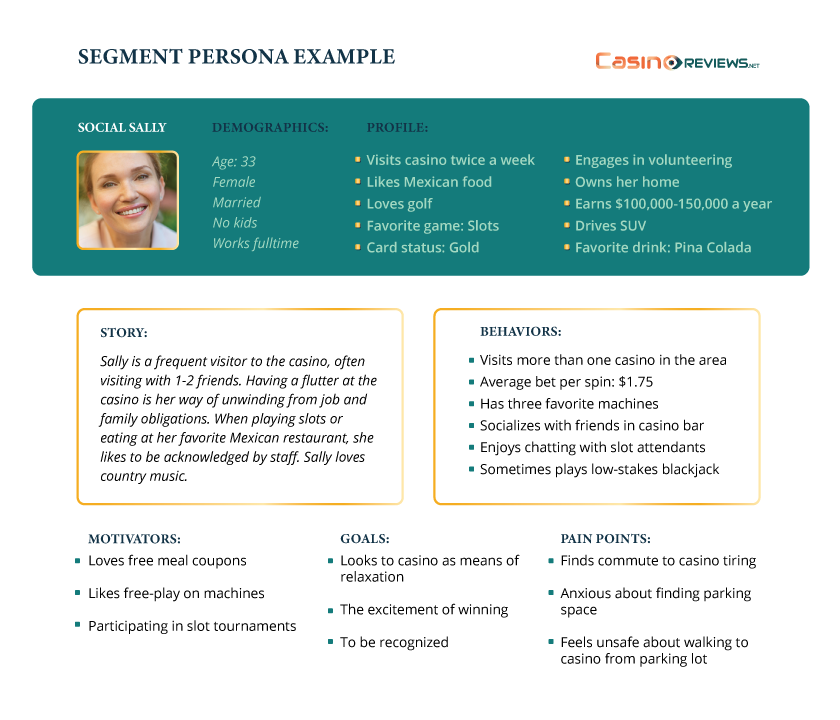The Role of Segmentation in Customer Experience

In an earlier article, we introduced the SMILES Framework with which to deliver a consistently superior customer experience to casino guests. Segmentation is a key component of SMILES. In this article, we explain the concept of customer segmentation and discuss its relevance to customer experience.
Introduction
An integrated casino resort caters to customers with different needs, wants, and desires. Practical resource constraints often preempt a customized experience for each customer. However, customers expect that the experience offered caters to their needs and unique circumstances. To solve this dilemma, businesses often resort to customer segmentation. Segmentation involves the disaggregation of the heterogeneous market into a manageable number of subgroups based on similarity in customers’ needs, wants, expectations, background, and benefits sought. Of all these factors, customer expectations go a long way in understanding customers and providing them the desired experience.
What Is Customer Segmentation
Like most B2C businesses, casino customers differ in their wants, needs, perceptions, values, and expectations. These differences form the foundation of segmentation. The process of segmentation involves identifying groups of consumers who have similar responses or reactions to a firm’s offerings within their group but whose responses differ from other groups.
Through segmentation, large heterogeneous markets can be divided into smaller segments that can be reached efficiently and effectively with products and services that match their unique needs. Segmentation, in effect, is a compromise between the efficiency of treating all customers alike (traditionally the economist’s view of the market) and the effectiveness of treating each customer differently (the consumer psychologist’s view).
There is no single way to segment a market. Typically, marketers try different segmentation variables, alone and in combination, to determine the best way to view their markets. Major segmentation variables include demographics (e.g., age, gender, life-cycle stage, income, occupation), psychographics (e.g., social class, lifestyle, personality), and behavioral variables (e.g., occasions, benefits, user status, and loyalty status). Having identified the segments, marketers need to decide which specific segments to target with their offerings. Targeting requires aligning the firm’s capabilities and resources with specific needs, wants, and values of the segment.
The casino industry is fortunate to have more customer data than most other industries. Their “carded play” provides valuable behavioral data that can be tracked to the level of the individual customer. Loyalty cards also provide information such as which facilities within an integrated resort a customer uses, which restaurant he frequents, and the time he typically spends gambling.
However, except for the very big spenders (where private gaming rooms, as well as residential suites, are sometimes remodeled to cater to a gambler’s Feng Shui specifications), it is not possible to offer individualized products and services to each customer. Nonetheless, casinos can use their vast reservoir of data to effectively segment their customers and choose which segments they want to target with specific offerings.
By aligning products and services with the needs and expectations of the targeted segments, integrated casino resorts can provide a valued customer experience, thus increasing customer satisfaction, loyalty, and retention. According to Bain and Company, a mere 5% increase in customer retention can increase a company’s profitability by up to 95%. Gartner Group statistics (quoted in Forbes) tell us that 80% of a company’s future revenue will come from just 20% of existing customers.
Customer Personas
To better understand the needs and aspirations of various segments, integrated casino resorts should create customer personas using the same underlying variables used to create the segments. Personas breathe life to segment data, creating a story with which to communicate customer expectations to all employees and to map segment-wise customer journeys.
Customer journeys are increasingly used by businesses as a means of monitoring and enhancing the customer experience. However, because of insufficient or inaccurate customer data, journey maps do not always yield desired results. According to Gartner, 82% of companies have created a journey map, but only 47% felt like they were using those maps effectively.
Figure 1 provides an example of a customer persona used by a regional casino. While there is no one method of designing personas, a typical persona presents a snapshot of actionable median information about the targeted segment. This information comprises of customer demographics, customer profile, a short “story” about the customer’s life, motivators for choosing a particular establishment (in this case, the casino), pain points experienced by the segment, and characteristic behaviors observed during a visit to the casino.

Figure 1: Customer Persona-Social Sally
Many companies create personas without researching their customers. This omission often proves very dangerous as the resulting offering and customer journey are far from what the target segment desires. Segmentation without accurate background data is useless, and personas created without meaningful segment data could lead CX providers down a treacherous path. Typically segment data should include demographic data supplemented by attitudinal and behavioral variables such as level of satisfaction with the casino, the customer’s mental model, level of loyalty, the customer segment’s pain points, and lifestyle variables.
Benefits of Segmentation
Market segments, as reflected by personas, reveal the emotions and pain points experienced by customers in that segment. This information allows casino operators to finetune their offerings and upgrade the customer experience.
Apart from its direct impact on customer experience, segmentation offers other benefits such as better focus and resource allocation, higher revenues, and profit optimization. The costs of serving various segments and corresponding revenues become apparent with proper segmentation. Ultimately, by focusing on segments comprising of high lifetime value customers, an integrated casino resort can maximize its customer equity.
Summary
Segmentation divides customers into distinct, meaningful, and homogeneous subgroups based on one or more attributes and characteristics. While widely accepted in most industries as a key strategy to improve marketing effectiveness, not many casino operators use segmentation to good effect.
An integrated casino resort attracts a variety of guests with different backgrounds, goals, and expectations. Grouping customers with similar needs and expectations enables casino operators to understand their targeted segments better and offer each targeted segment an experience geared specifically toward its needs and wants. Doing so enriches the customer experience, engenders customer loyalty, and maximizes customer equity.
Read more:
- How to Provide Your Customers the Best Casino Experience – The SMILES Framework
- Market Orientation and Value-Based Customer Experience in Casinos
- Internal Marketing – The Key to Delivering Great Customer Experience in Casinos
- The Role of Linkage Analysis in Delivering Positive Customer Experience for Casino Players
- The Role of Emotional Competence in Delivering and Improving Casino Customer Experience
- The Role of Service Blueprinting in Creating High-Quality Customer Experiences in Casinos





Review this Blog
Leave a Comment
User Comments
comments for The Role of Segmentation in Customer Experience